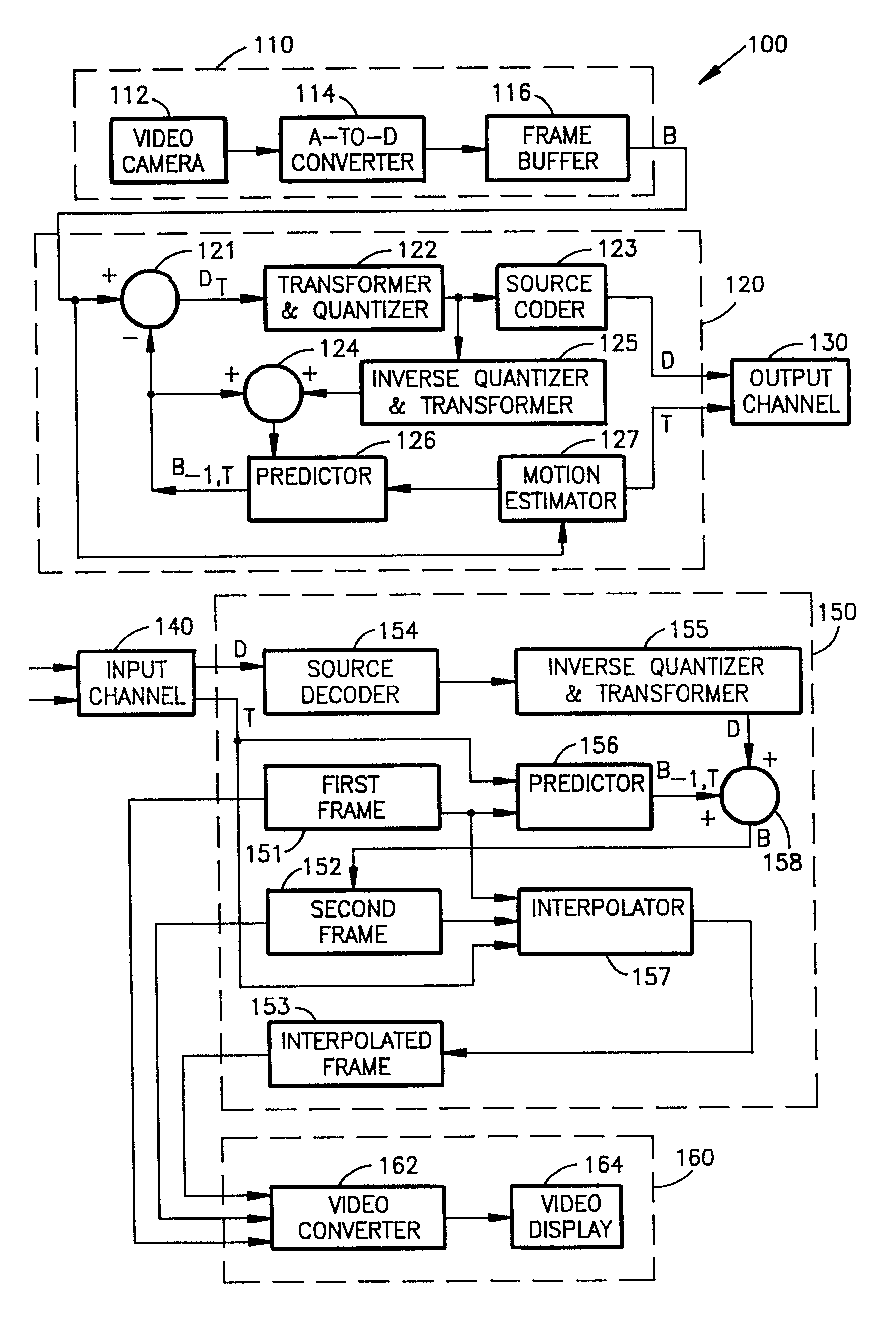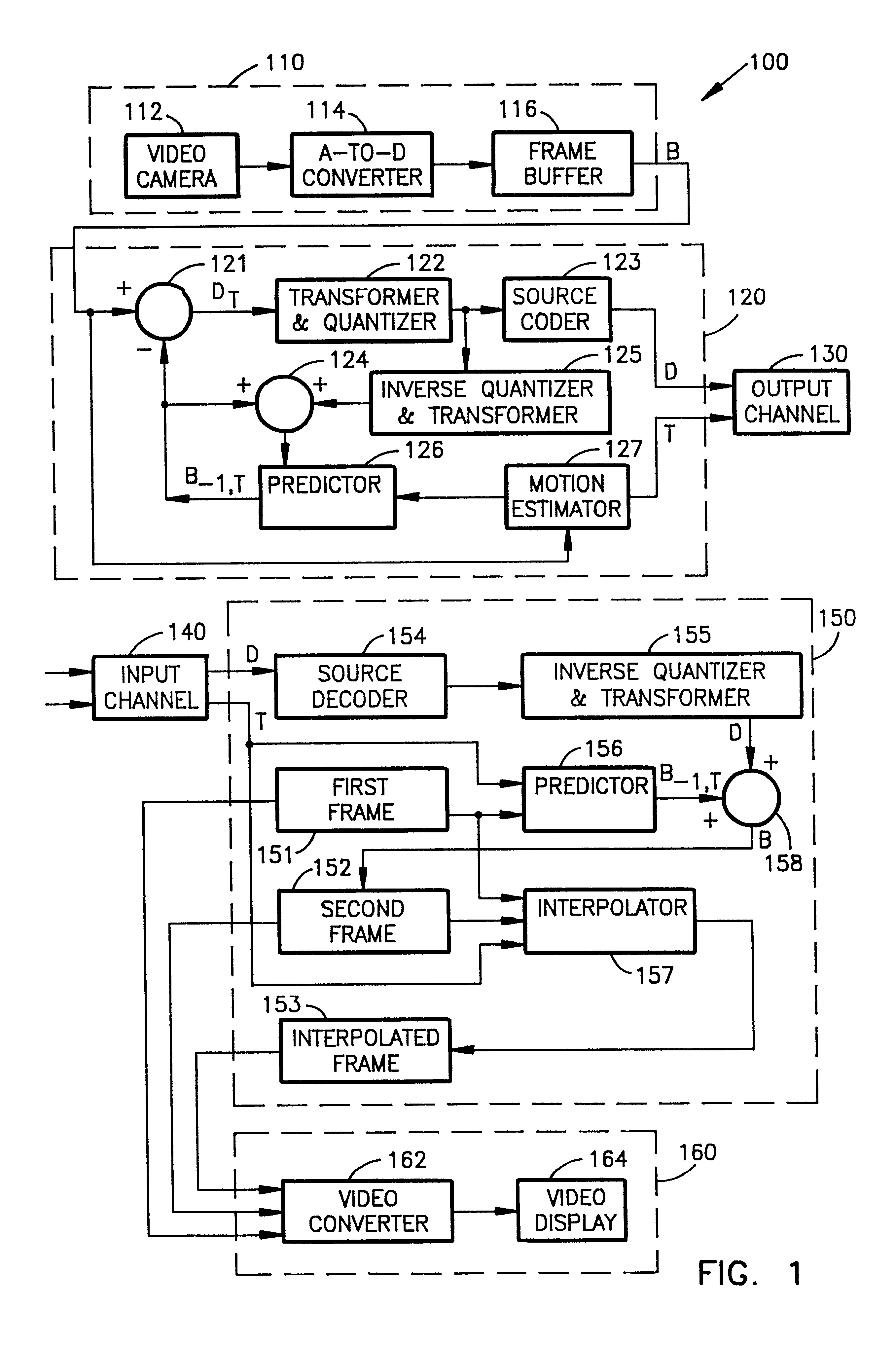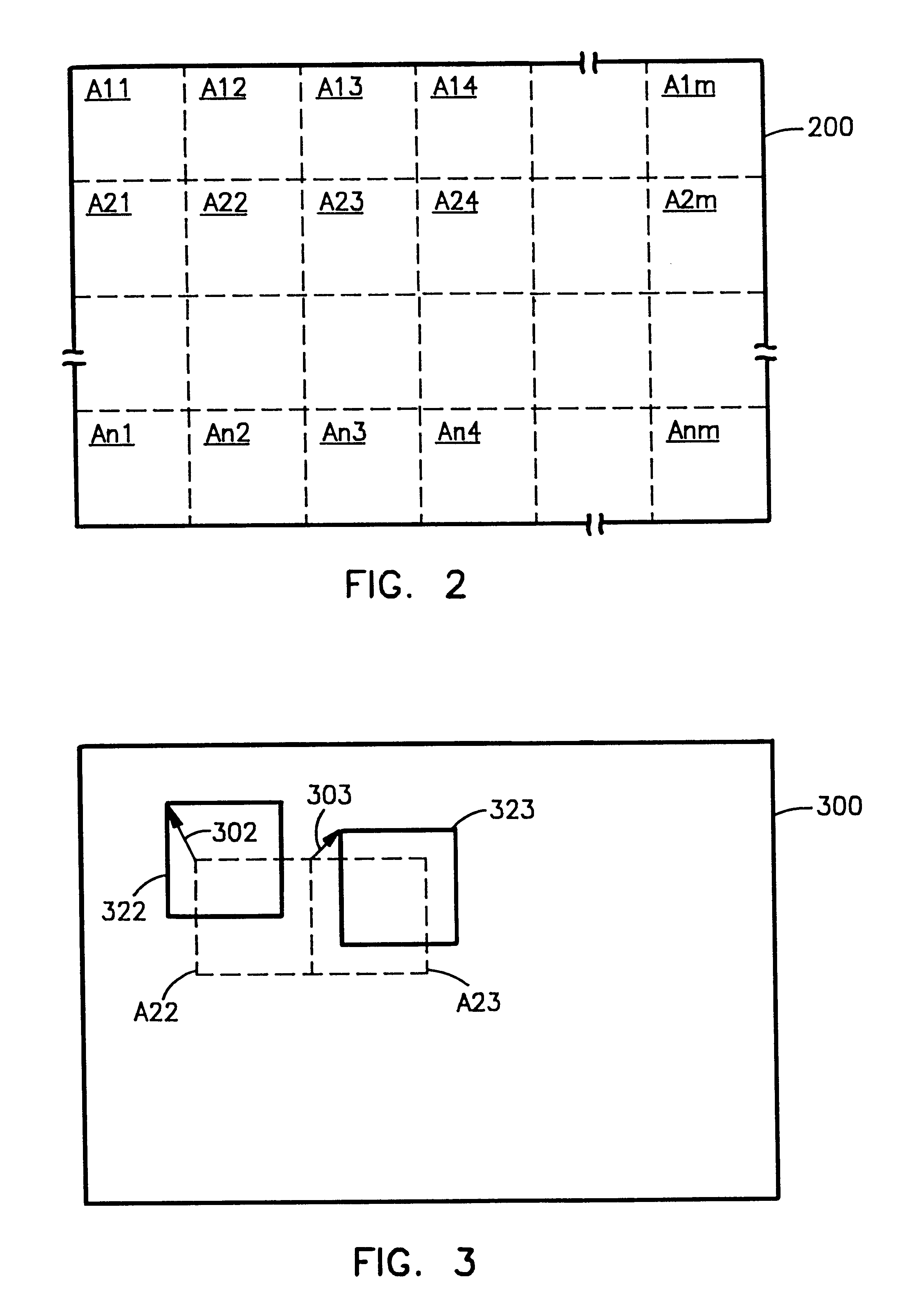Motion vector based frame insertion process for increasing the frame rate of moving images
a motion vector and frame rate technology, applied in the field of motion vector based frame insertion process for increasing the frame rate of moving images, can solve the problems of inpractical transmission of uncompressed pixels by videophones, low bit rate, and limited bit rate of communication protocols
- Summary
- Abstract
- Description
- Claims
- Application Information
AI Technical Summary
Benefits of technology
Problems solved by technology
Method used
Image
Examples
Embodiment Construction
In accordance with an embodiment of the invention, a video decoding and display system uses temporal post-processing to provide smoother motion in moving images. The temporal post-processing uses motion vectors to generate one or more interpolated frames. The post-processing converts motion vectors which indicate visually similar areas in first and second frames to interpolated motion vectors which indicate areas in the interpolated frames which are similar to the areas in the first and second frames.
In one embodiment of the invention, each component of each motion vector is divided by two and used to generate an interpolated frame half way between the first and second frames. An area in the first frame is matched with an area in the interpolated frame half way to the visually similar base area in the second frame. Display times of the first and second frames are delayed so that the display time of the interpolated frame is half way between the display times of the first and second ...
PUM
 Login to View More
Login to View More Abstract
Description
Claims
Application Information
 Login to View More
Login to View More - R&D
- Intellectual Property
- Life Sciences
- Materials
- Tech Scout
- Unparalleled Data Quality
- Higher Quality Content
- 60% Fewer Hallucinations
Browse by: Latest US Patents, China's latest patents, Technical Efficacy Thesaurus, Application Domain, Technology Topic, Popular Technical Reports.
© 2025 PatSnap. All rights reserved.Legal|Privacy policy|Modern Slavery Act Transparency Statement|Sitemap|About US| Contact US: help@patsnap.com



